Article byDena Tasse-Winter
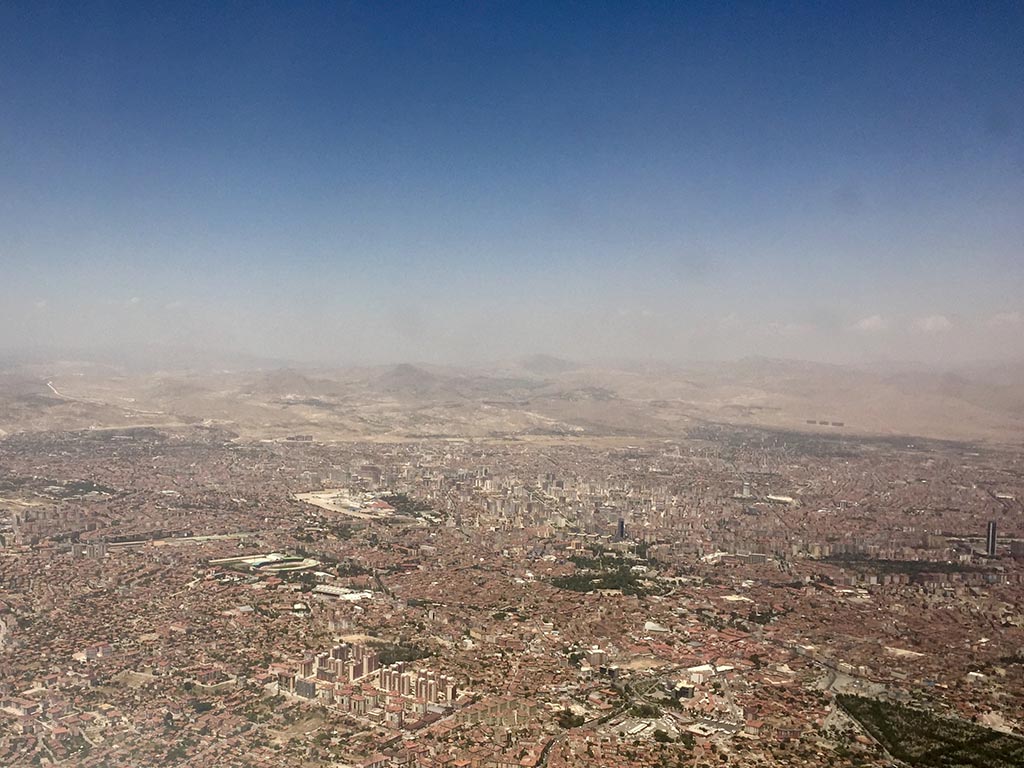
As a PhD student at the University of York, my research focuses on the ways in which people engage with heritage in the places where they live and work, namely contemporary cities. In the summer of 2016 I had the chance to apply this line of thinking to a different type of site as a member of the Çatalhöyük Visualisation Team. Çatalhöyük is a meaningful place for many people. The site is unique in that it is both open to tourists and is also an active dig where archaeologists have lived and conducted research for several months each year for almost 25 years straight. The following vignettes begin to explore the relationship between this place and the people who interact with it: the impact Çatalhöyük has on us, the impact we have on Çatalhöyük, and the impact we have on each other through our time here.
The impact Çatalhöyük has on us
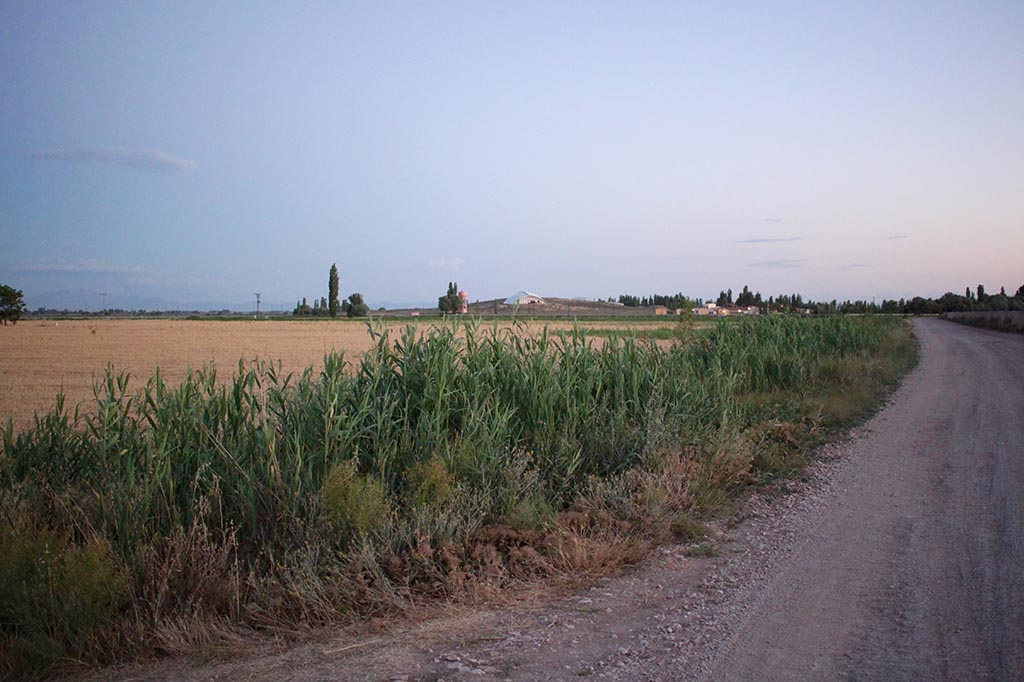
We approach Konya on a bright summer morning.
The sprawling metropolis expands before us as we begin our descent (1).
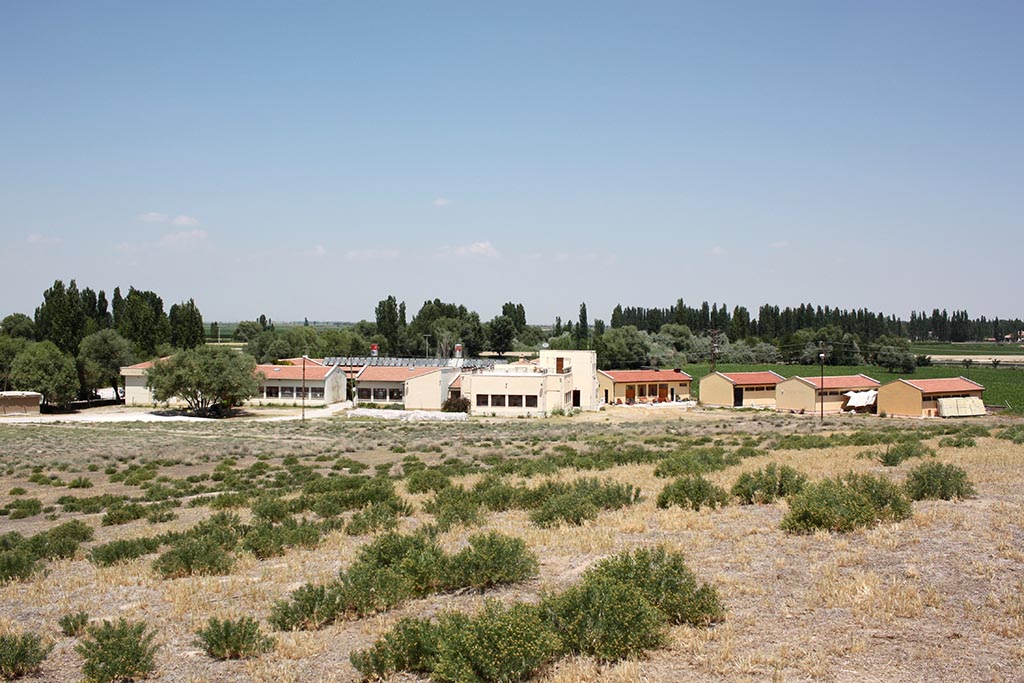
We are driven south-east across the sweeping Turkish landscape and in less than an hour we've arrived at Çatalhöyük: magnificent Neolithic settlement, active archaeological excavation site, and our home for the next two and a half weeks. Once here, it is easy to forget that the modern city of Konya lies just down the road (2).
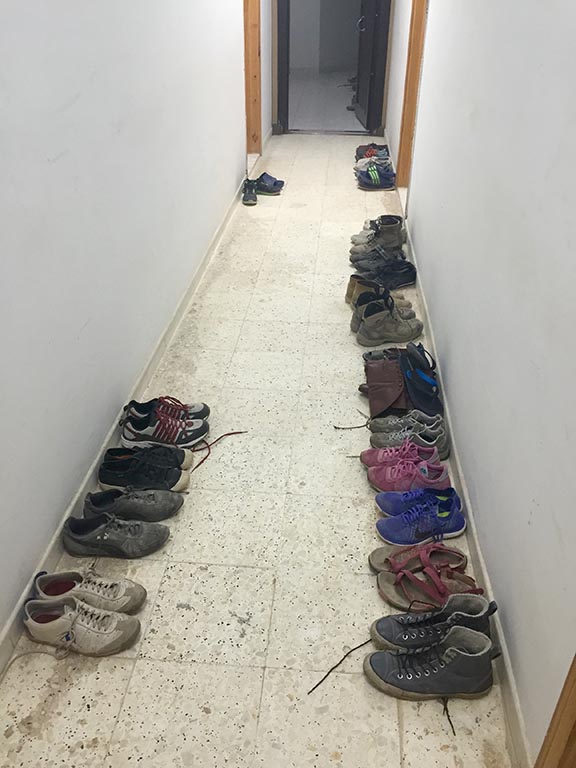
The Çatalhöyük Research Project is comprised of an international team of experts in a wide range of archaeological subfields. Researchers and staff live on site at the dig house during each season (3). We wake up at the same early hour and go to work together, eat all of our meals together, adjust to the lack of internet access together. There are certain sights that might appear bizarre to the non-archaeologist’s eye but here are commonplace, like the rows of dozens of shoes covered with 9,000-year-old dust lining the hallways (4). We hail from many different countries and backgrounds, but we are united in our experience here on site.
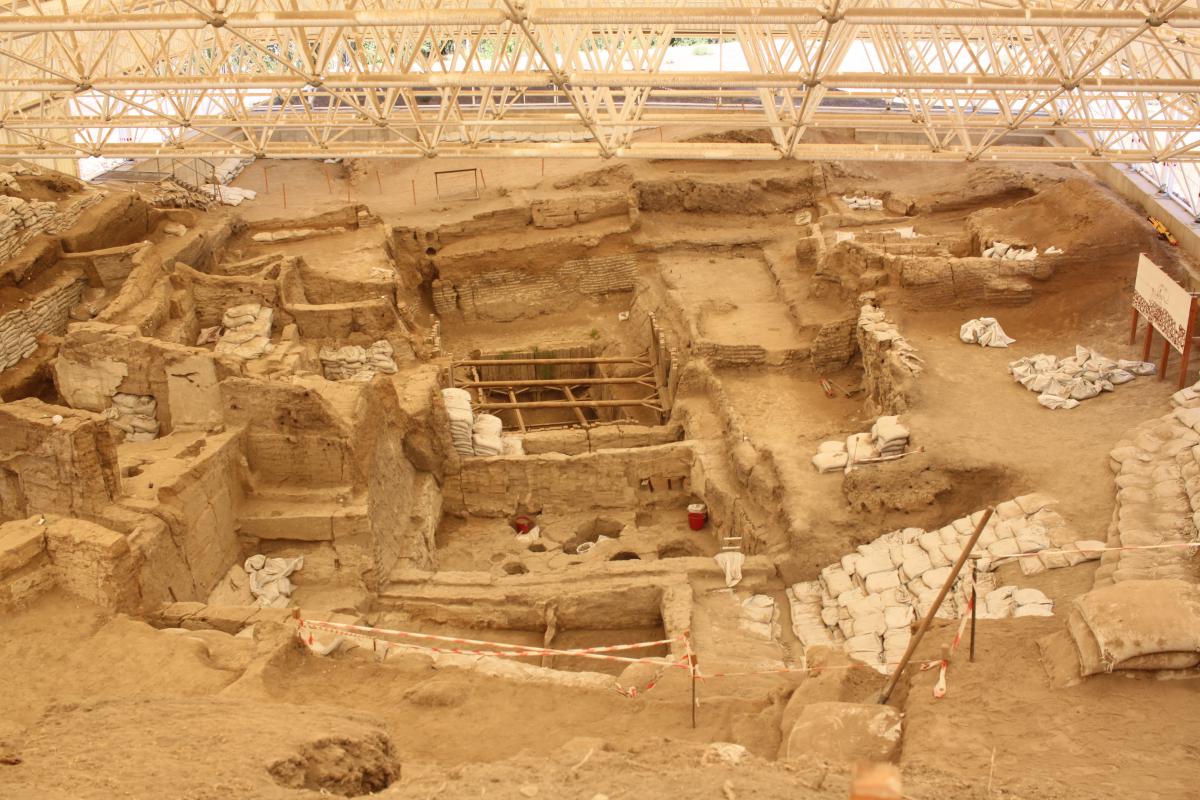
The beauty and magnitude of a site such as Çatalhöyük is that you become so immersed in the atmosphere of the place that you feel removed from the rest of the world. I think this sense of removal is an important one, and it both supports and hinders our ability to fully engage with Çatalhöyük. Being isolated out here provides the opportunity to begin to picture ourselves in the Neolithic as we work to understand this culture from the distant past. There are few modern distractions to detract from the experience (other than the innovative technologies being used to record and interpret the archaeology). Our team visits the excavation area most days; to peer into the over 20 meters of layered history in the South Shelter is both humbling and awe-inspiring (5).
As heritage and visualisation specialists, our role is to bring the site to life for the nearly 21,000 visitors from around the world who come to Çatalhöyük annually. It is an incredible opportunity to create interpretive materials for visitors directly on site, when so often we must rely on our memories as we work in offices far-removed from the places we are attempting to evoke. And yet it becomes challenging to take a step back when our immersion in the site 24 hours a day is all-encompassing. How can we observe this place from a visitor's perspective when we are so closely connected to the minutiae of being here?
The impact we have on Çatalhöyük
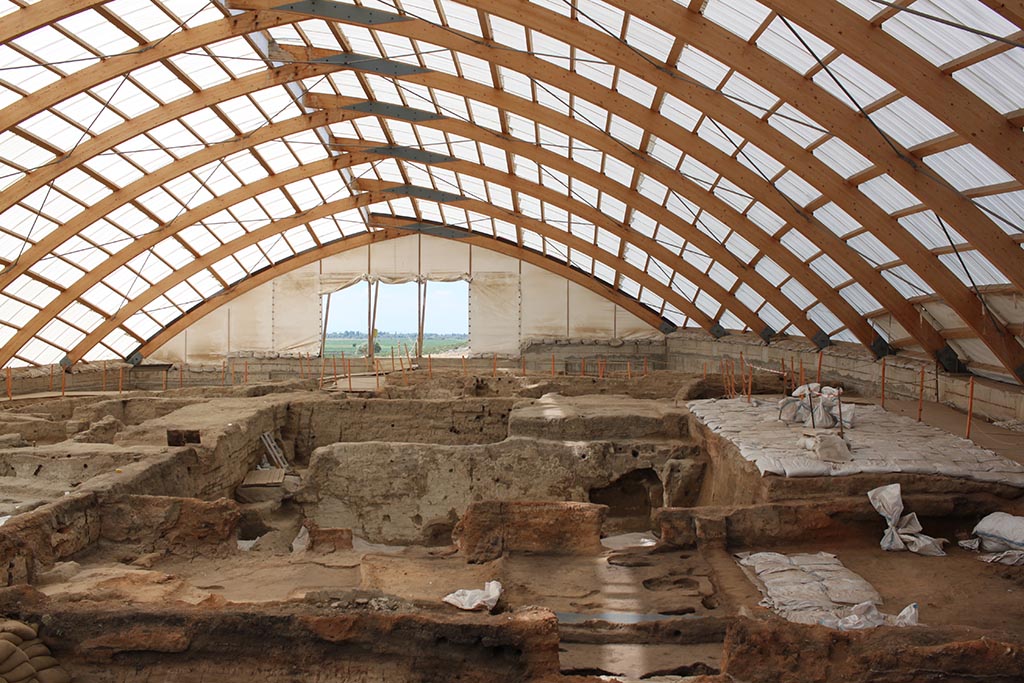
Every person who comes to Çatalhöyük, whether an archaeologist, heritage specialist, other staff member or visitor, is here to learn something. But often we do not acknowledge that as we are gathering information and taking it with us, be it by digging and recording or even simply walking through the site, we inevitably leave things behind, adding to the thousands-year history present here. We build new structures to protect the archaeology, we accidentally leave a bottle cap or hair tie behind, we fill the space with laughter for a moment in time (6, 7).
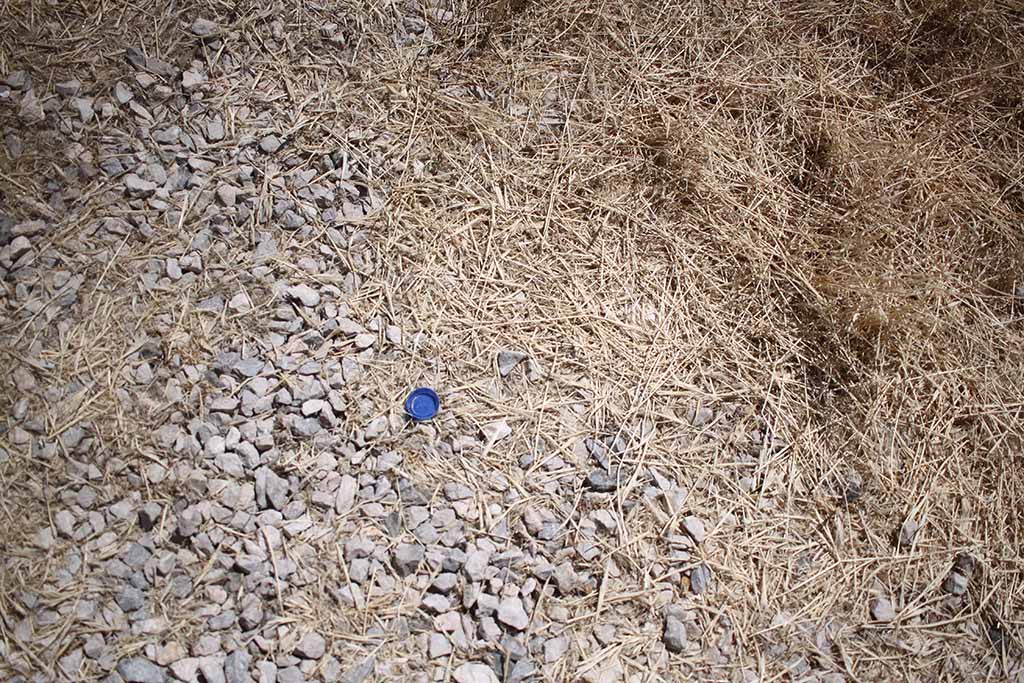
The archaeological exploration that occurs on site profoundly impacts the physical landscape. Çatalhöyük was first excavated from 1961 to 1965 by James Mellaart, and the site lay dormant for years before Ian Hodder started the Çatalhöyük Research Project in 1993 and his team resumed excavations. Hodder re-opened a portion of the area where Mellaart had worked, and expanded the scope of excavation, but there are also many areas around the site that have not been touched since Mellaart’s trowel last punctured them (8).
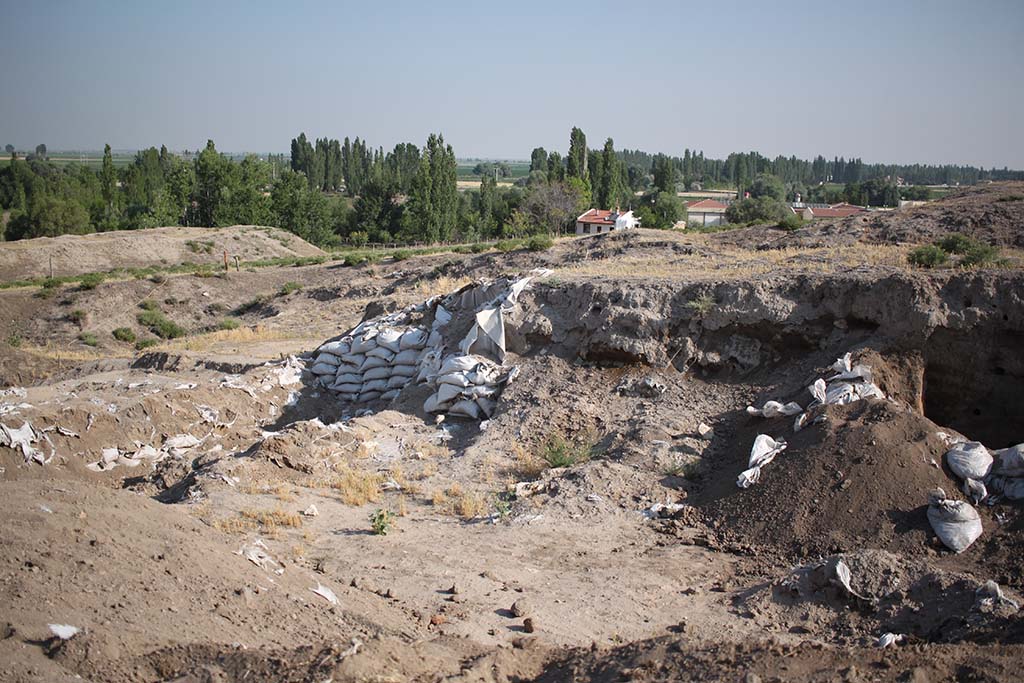
You can see evidence of what Mellaart and his team left behind in the spoil heaps (mounds of discarded earth) behind the current South Shelter, and in the bits of plastic netting that poke out of the ground as you climb the mound (9). It is easy to get caught up in the notion that the importance of the site is only in its Neolithic past, but these visual cues remind us that we are continually making history even as we uncover it.
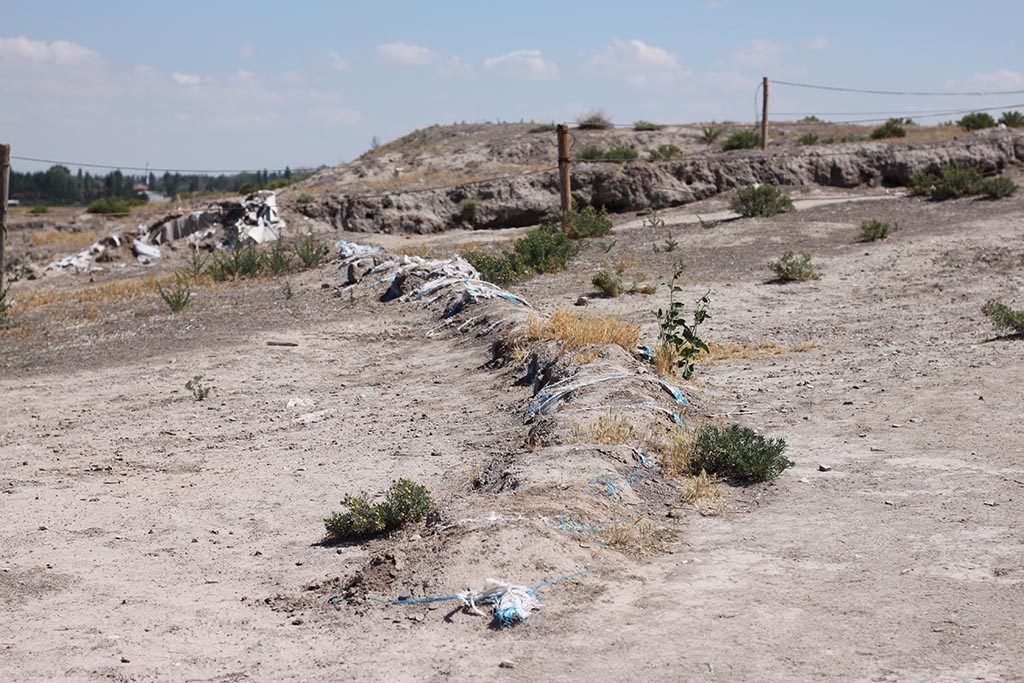
As each season of research at Çatalhöyük comes to a close, we leave behind a new layer of heritage. 9,000 years from now, what will archaeologists of the future learn based on the imprint we are making on the site today?
Photos by Dena Tasse-Winter





